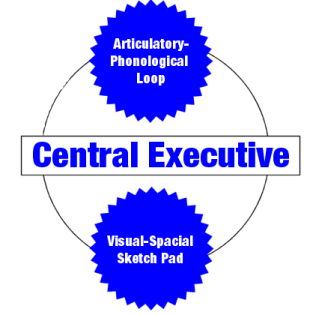Baddeley and Hitch (1974) proposed the Working Memory Model, an enhancement of the multi-store explanation of how memory works. It consists of three sections:

-
Articulatory-Phonological Loop
The loop stores auditory information from the ears, as well as containing an articulatory system for speech production.
Memory Theories
-
Visual-Spacial Sketch Pad
This manages visual coding.
-
Central Executive
Information rehearsed from the articulatory-phonological loop and visual-spacial sketch pad goes to the central executive. This is our 'attention'.
Evaluation of Working Memory
|
Supported by many case studies (such as H.M.) where people are unable to make new long-term memories but whose short-term memories are unaffected. This indicates that the active processing of information is separate to long-term memory. |
|
|
It has been argued that the Working Memory Model explains memory better than the multi-store model, which requires verbal rehearsal of information in order for it to be stored in long-term memory. The Working Memory model suggests that verbal rehearsal is optional, explaining why we don't have to rehearse information verbally in order to remember it. |
|
|
It is difficult to prove the existence of the Central Executive, as it is not related to any specific kind of information, such as auditory or visual coding. |



























